 The Fort of São Sebastião, former defensive wall of Castro Marim, and the Walls and Porta de Almedina, in Silves, were classified this Thursday as national monuments, according to a decision by the Council of Ministers.
The Fort of São Sebastião, former defensive wall of Castro Marim, and the Walls and Porta de Almedina, in Silves, were classified this Thursday as national monuments, according to a decision by the Council of Ministers.
In the case of the Fort of São Sebastião, the remaining architectural elements of the bastions and revelins that linked it to the castle of Castro Marim were also included in the classification as a national monument.
Silves now has five national monuments: the old Cathedral, Castle of Silves (Alcáçova), Almedina walls and its main gate, Cruz de Portugal and Poço-Cisterna.
In Castro Marim, its castle was already classified as a monument.
The Fort of São Sebastião was the target of extensive recovery and restoration work in the mid-2000s.
Much worse is the situation of the walls and Porta de Almedina, which present problems with the Municipal Museum of Silves and even in the northern area, after the passage of the tornado.
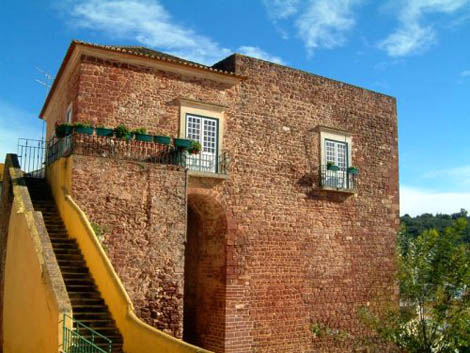 In total, the Government approved in the Council of Ministers yesterday seven new monuments, through decrees that also proceed to the classification as national monuments of the Sanctuary of Nossa Senhora de Aires, in the place of Aires, and of the Chapel of Senhor Jesus do Cruzeiro, in place of Cruzeiro, in the parish and municipality of Viana do Alentejo, district of Évora; the Terreiro da Batalha de Montes Claros, in the Herdades de Travassos and Nogueiras and in the Herdades de Fuseira and Álamo, parish of Rio de Moinhos, municipality of Borba, district of Évora; the Nuclei of the Abul Archaeological Site, in Monte Novo da Palma, parish of Santa Maria do Castelo, municipality of Alcácer do Sal, district of Setúbal; the Roman Medicinal Baths of Chaves, in Chaves, district of Vila Real; the Campo Militar de Trancoso, also known as Campo Militar de São Marcos, in the parishes of São Pedro and Torres, municipality of Trancoso, district of Guarda and Casal de Santa Maria (building complex and surrounding area), also known as «Parque de Serralves » or «Quinta do Riba de Ave», in Porto, parish of Lordelo do Ouro, municipality and district of Porto.
In total, the Government approved in the Council of Ministers yesterday seven new monuments, through decrees that also proceed to the classification as national monuments of the Sanctuary of Nossa Senhora de Aires, in the place of Aires, and of the Chapel of Senhor Jesus do Cruzeiro, in place of Cruzeiro, in the parish and municipality of Viana do Alentejo, district of Évora; the Terreiro da Batalha de Montes Claros, in the Herdades de Travassos and Nogueiras and in the Herdades de Fuseira and Álamo, parish of Rio de Moinhos, municipality of Borba, district of Évora; the Nuclei of the Abul Archaeological Site, in Monte Novo da Palma, parish of Santa Maria do Castelo, municipality of Alcácer do Sal, district of Setúbal; the Roman Medicinal Baths of Chaves, in Chaves, district of Vila Real; the Campo Militar de Trancoso, also known as Campo Militar de São Marcos, in the parishes of São Pedro and Torres, municipality of Trancoso, district of Guarda and Casal de Santa Maria (building complex and surrounding area), also known as «Parque de Serralves » or «Quinta do Riba de Ave», in Porto, parish of Lordelo do Ouro, municipality and district of Porto.
In the Algarve there are the following national monuments: Castle of Silves, Castle of Castro Marim, Castle and walls of Lagos, Fortress of Sagres, Walls of the Castle of Tavira, Old Convent of Graça (Loulé), Convent of Nossa Senhora da Assunção/Municipal Museum in Faro, Cruz de Portugal (Silves), Chapel of Nossa Senhora de Guadalupe (Vila do Bispo), Misericórdia Church of Loulé, Church of Santo António (Lagos), Church of São Sebastião (Lagos), Mother Church of Estômbar, Mother Church of Loulé, Parish Church of Santa Maria do Castelo (Tavira), Cathedral of Silves, Megalithic Monuments of Alcalar (Portimão), Roman Ruins of Milreu (Faro), Villa Romana da Abicada (Portimão), Villa Romana do Cerro da Vila (Loulé), as well as the two new monuments now classified.
The importance of the walls and the Porta da Almedina de Silves
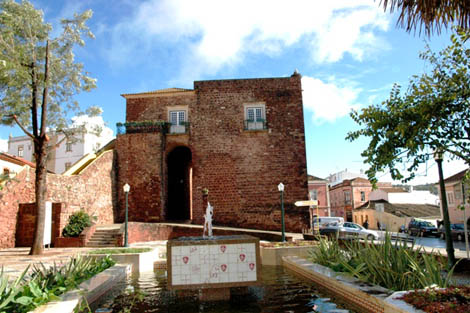 The Medina of any Muslim city is one of the two fundamental poles of urban organization, developing under the protection of the citadel, but connecting to it through at least one door.
The Medina of any Muslim city is one of the two fundamental poles of urban organization, developing under the protection of the citadel, but connecting to it through at least one door.
In the case of Silves, and according to the testimony of Rosa Varela Gomes, there seems to be a pre-existence of Roman origin in the layout of the main roads of the Medina, given that it is still possible to distinguish two axes, arranged transversely between them, and crisscrossing at the center of the town, in a model that recalls the adoption of a “cardus and a decumanus” of Roman descent.
The first axis starts from the Porta da Almedina (or Loulé) and connects this main entrance with the Porta da Alcáçova.
The second axis is constituted by Rua de D. Sancho I and directly linked the west and east gates of the city. In the place where these two arteries joined, was located the largest mosque, transformed, from the XNUMXth century, into the current Cathedral of Silves.
The entire city (Alcáçova and Almedina) was surrounded by walls, extending over a kilometer away and covering about seven hectares.
Part of this walled system was destroyed, but the remainder is immensely important to the point of elevating Silves to the status of the main city-based Islamic military monument in the country.
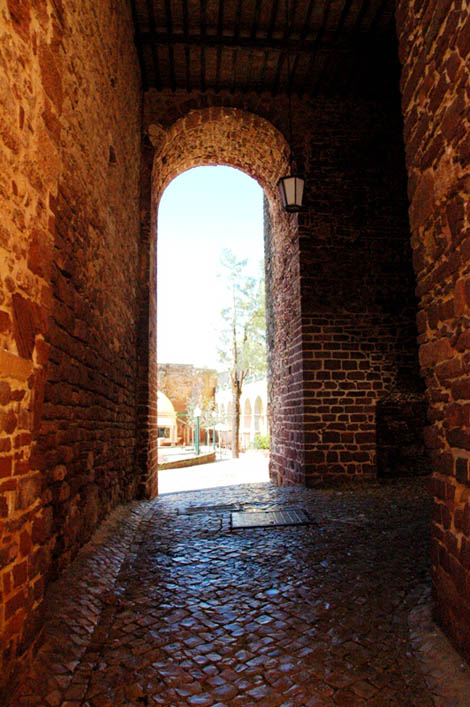 The gate system also reveals the complexity of the fortification. The Almedina Gate, despite being much altered during the Christian period, is a massive structure, protected by two albarra-type towers with an elbow configuration. The remaining doors were defended by towers.
The gate system also reveals the complexity of the fortification. The Almedina Gate, despite being much altered during the Christian period, is a massive structure, protected by two albarra-type towers with an elbow configuration. The remaining doors were defended by towers.
Silves, the former Islamic capital of the Gharb, still stands today as an archaeological challenge of prime importance. Although part of the military complex has been suppressed in the centuries of Christian rule, which has been discovered in successive archaeological campaigns in various parts of the city, it ensures the status of an archaeological field of vital relevance for the knowledge of the Islamic period in our country. .
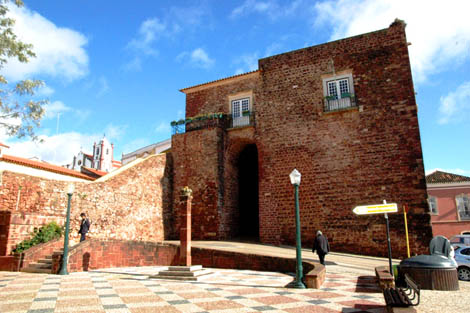
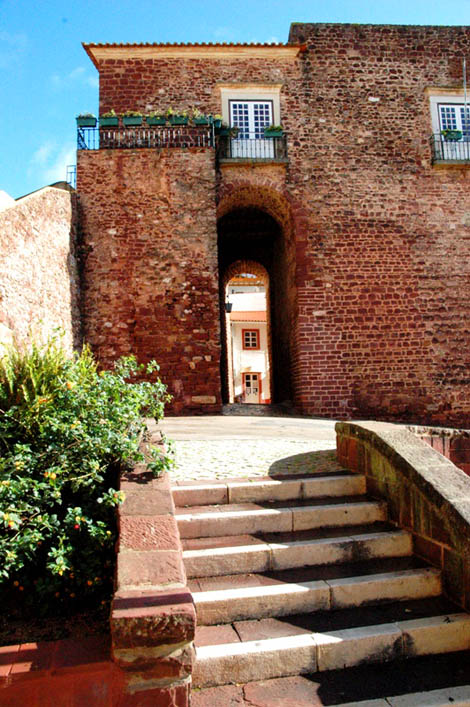

















Comments